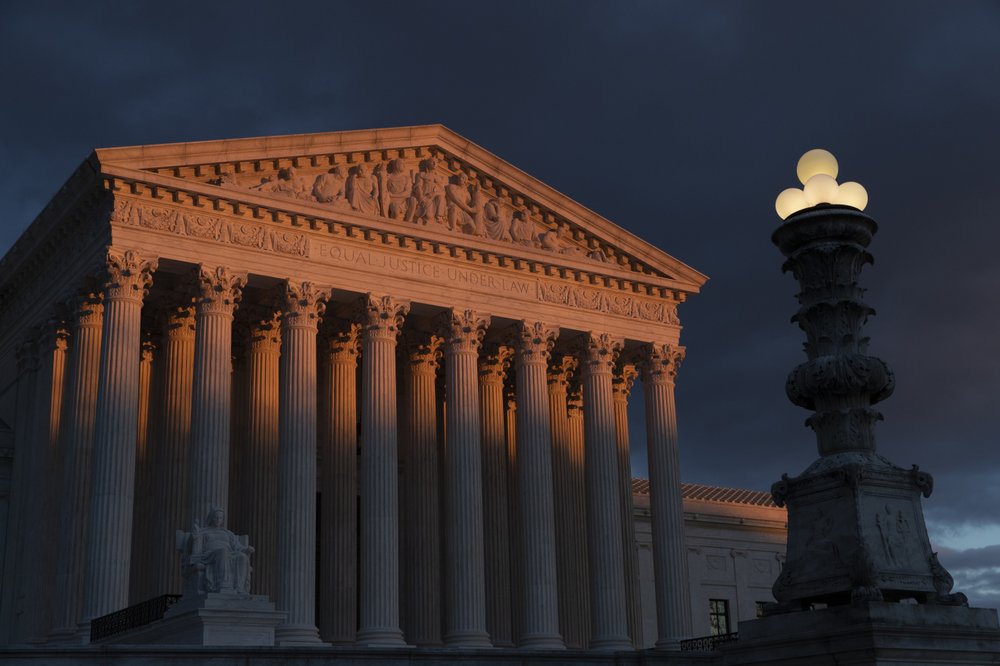National
A more skeptical high court to hear redistricting challenge

WASHINGTON (AP) — Last year, proponents of limiting partisan politics in the creation of electoral districts needed to win over Justice Anthony Kennedy. They couldn’t.
The issue is back before the Supreme Court again, with arguments on Tuesday, and it might be harder than ever to convince the justices to rein in the practice known as partisan gerrymandering, designing districts to benefit one political party.
A new round of redistricting awaits after the 2020 census, and the court’s decision could help shape the makeup of Congress and state legislatures over the next 10 years.
With Kennedy retired, the question is whether federal courts will remain open at all to complaints about political line-drawing.
“The question of what the outcome will be in light of recent changes in the membership of the Supreme Court is anybody’s guess,” said Seth Waxman, the former lead high court lawyer in the Clinton administration and a supporter of limits on drawing districts for partisan gain. Justice Brett Kavanaugh is in Kennedy’s seat.
Chief Justice John Roberts is now the court conservative closest to the center and the focus of the arguments for reining in partisan redistricting, said Michael Kimberly, the lawyer for Republican voters who challenged a Democratic congressional district in Maryland.
“The concern now is persuading him,” Kimberly said, acknowledging Roberts’ skepticism about the court’s involvement in the issue during arguments last term.
Critics of partisan manipulation of electoral maps say that when one party controls redistricting, it can exaggerate and entrench its power, even in states that are otherwise closely divided between Republicans and Democrats.
Republicans were the big beneficiaries of the most recent round of redistricting in 2011, following the once-a-decade census, because they scored resounding victories in the 2010 elections.
The court has before it two cases, from Maryland and North Carolina, with strong evidence that elected officials charged with drawing and approving congressional districts acted for maximum partisan advantage. In North Carolina, Republicans ran the process and sought to preserve a 10-3 split in the congressional delegation in favor of the GOP, even as statewide races are usually closely divided. In Maryland, Democrats controlled redistricting and sought to flip one district that had been represented by a Republican for 20 years.
Both plans succeeded and lower courts concluded that the districts violated the Constitution.
Bolstering those court outcomes were the candid appraisals by former Maryland Gov. Martin O’Malley, a Democrat, and North Carolina state Rep. David Lewis, a Republican, of the critical role politics played in redistricting.
Part of the point in redrawing the 6th congressional district in western Maryland was to “create a district where the people would be more likely to elect a Democrat than a Republican, yes, this was clearly my intent,” O’Malley said in testimony for the lawsuit challenging the district.
Needing to reduce the district’s population by just over 10,000 people to ensure similarly sized congressional districts, Maryland Democrats instead removed 360,000 Republicans and replaced them with 350,000 Democrats.
In North Carolina, Lewis boasted that the congressional map he helped draw in 2016 — to replace a map that had been struck down for relying too heavily on race — would preserve the Republicans’ already sizable edge. He told fellow lawmakers then that he was proposing a 10-3 map “because I do not believe it’s possible to draw a map with 11 Republicans and two Democrats.” Lewis said later he was joking, but those who sued don’t think so.
The 2018 race margins describe a tell-tale sign of partisan gerrymandering, according to map critics: Voters supporting the minority party are packed tightly into fewer districts, resulting in easy victories, while the majority party wins narrower races, but in more districts. While each of the three incumbent Democrats cruised to re-election in November with at least 70 percent of the vote, no winning Republican in a contested race received above 60 percent.
North Carolina voters will fill two House seats this year. One is in the GOP-leaning 9th Congressional District, where the state elections board ordered a new election based on evidence of illegal absentee ballot activities involving a political operative who worked for the Republican candidate. The other is the seat held by the late Rep. Walter Jones Jr.
A court ruling that leads to further remapping could add confusion for voters and candidates in the middle of campaigns.
But the Supreme Court might not be as receptive as the lower courts.
In 1986, the justices held that federal courts should be open to claims of partisan gerrymandering. But since then, the court has not struck down districts on those grounds or even decided on the right way to do so. By contrast, the court has invalidated many districts because of racial gerrymandering over the past 50 years.
By 2004, four conservative justices were ready to take courts out of the business of dealing with partisan gerrymandering claims, but Kennedy wouldn’t go along.
Kennedy’s position encouraged supporters of limits when the justices took up cases last year involving Republican-drawn state legislative districts in Wisconsin and the same Maryland congressional district.
The cases had statistical analyses, proposals for how judges could reasonably determine when districting plans went too far and the non-partisan optics of Republicans in the offending role in one state and Democrats in the other.
Yet the court left the big issues unresolved in a pair of rulings in June that were nonetheless a setback for advocates who hoped they had finally found a way to prove their case to a long-skeptical Supreme Court and Kennedy, in particular.
But lower federal courts have continued to rule on redistricting complaints. In addition to the Maryland and North Carolina decisions, there are pending challenges to Republican-controlled plans in Michigan and Ohio that could be affected by the high court’s decision.
Paul Clement, who served as President George W. Bush’s top Supreme Court lawyer, said the justices should once and for all declare federal courts off limits for partisan redistricting because the inherently political job of drawing electoral districts belongs to the politicians. In his Supreme Court filing on behalf of North Carolina Republicans, Clement wrote that a “judicially manageable test for adjudicating partisan gerrymandering claims does not exist.”
A separate state court challenge to North Carolina legislative districts also is underway, following an approach used by Pennsylvania Democrats to win a state Supreme Court ruling last year that struck down the state’s Republican-drawn congressional districts.







